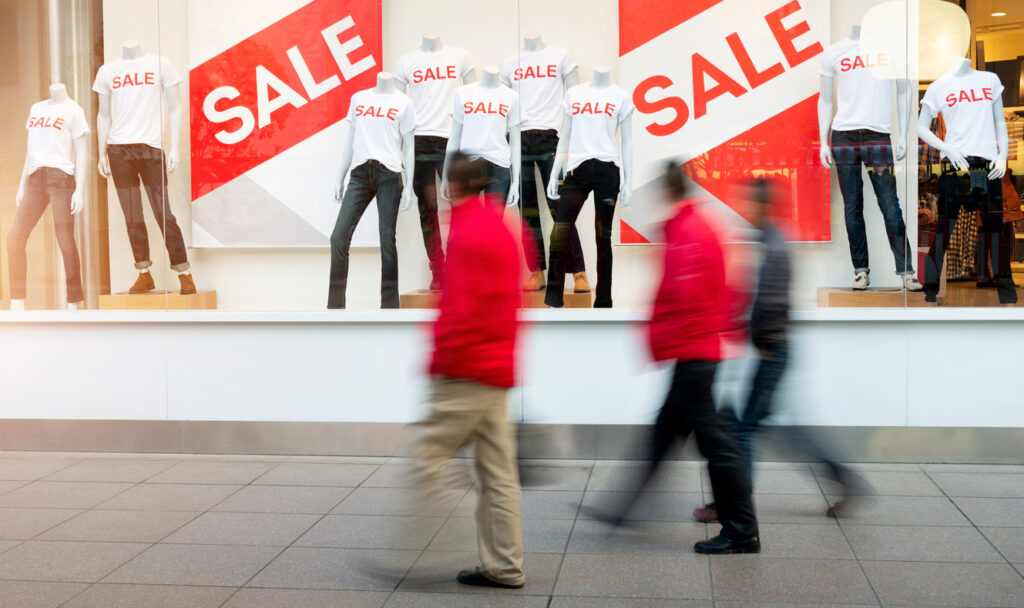Target Market Mapping
Retail Target Market Mapping cuts costs, reaches niche audiences, and outlines WHERE to place your media spend in a market. Put an end to wasted ad buys. Learn how Retail Location Data can boost revenue.
In detail
With this data we refine ad campaigns reduce wasted ad spend and drive real results!
When you know your audience you can market to them directly with better offers, coupons and loyalty programs. We reach them directly through their phones and IP addresses. All devices connected to the wi-fi receive ads on apps, websites and streaming TV. Reduce ad spend by reaching only those who will take action and already use the brand.
What is it
Target Market Mapping
Retail businesses, venues, stadiums receive lots of foot traffic (obviously). Why not harness the power of Target Market Mapping to track the digital footprints of the consumers visiting these places?
Every consumer carries a phone, and from the phone we can learn a great deal about the consumer on an anonymous level.
Data points show where they live, eat, work, hang out and workout as well as what media they consume.
This data creates anonymous profiles, which collectively form an audience. Understanding a brand’s audience and look-alike audiences, helps brands refine their products or services to better align with what their Ideal Customer Profile (ICP) is looking for.

Retail Location Data
Mobile devices have an IMEI (International Mobile Equipment Identity). This is an anonymous number attached to the device. This number is not attached to any personal or sensitive data tied to the consumer.
Consumer Journey Models
We create Consumer Journey Models through digital ad campaigns and Target Market Mapping. This is a visual representation of the steps a consumer takes when interacting with a product or service. If the business is e-commerce the data is limited to a consumers’ online journey only.
Reaching the right Consumer
The digital landscape is fragmented. Your consumer is on different stations, channels, and devices. Reaching them at the right time with the right message is imperative to keeping them engaged and coming back. Engaging look-alike audiences is also helping to reach consumers with a similar profile that haven’t yet engaged with the brand.
Meet your Audience
Who, where, age, interests, location, frequency of visits in stores
Serve them ads
Or serve ads to look alike audiences not yet engaged
Reap Rewards
Increased revenue, reduced ad budgets, higher brand engagement
Our Process
Data can tell us a lot about audiences
What we do with this data allows us to reach loyal customers with special offers. It allows us to create look-alike audiences to our current audience and market a different message to them. This increases sales, brand engagement and relevancy, since they’re already engaged with the brand. With this data, brands can cut ad budgets, refine their marketing and ad delivery and see higher ROAS.
Step 1
Get a study
Drop us a line, we’ll send you back a 30+ page report on your customers.
Step 2
Your Consumer's Profile
Once we understand your customer, we can create relevant messaging.
Step 3
Create Campaigns
Target and serve ads to look-alike audiences or existing & repeat consumers.
Want to reach an audience? We got you!
The report will cover data points on a retail location. Our online Consumer Journey reports come from digital ad campaigns and the consumers who engage with them and purchase.
Our Target Market Mapping will report on data points such as
- where the Customer comes from and goes to before and after visiting the brand.
- Favorite food chains.
- How many visitors, their frequency, dwell time, visits YoY.
- Heat maps on the parts of town the brand's customers are coming from.
- HHI, ethnicity
- Loyalty customers VS casual customers.
- And more!
With these data points, businesses are saving ad spend, reducing wasted ad spend, learning who their loyalty customers are and reaching them with powerful messaging to encourage more visits and purchases.
Look-alike audiences allow brands to reach other consumers who are identical in their habits and shopping behaviors to that of the loyalty customers.
By understanding a brand's loyalty customers and casual customers, powerful messaging can be created to reach each of these audiences as well as the media to get it in their face.
The outcomes are stronger brand engagement, raving fans, increased sales and revenue for the brand.
Reaching these audiences require fast nimble, intelligent ad servers.
These ads are in the format of display ads, native in feed ads, OTT/CTV, and streaming audio (Pandora & Spotify) Learn more about OTT/CTV here.
Ads are served via ad exchanges who utilize AI and machine learning algorithms to serve ads to the right consumer in the right place at the right time.
These could be seen on websites, in apps, on streaming TV channels, streaming radio.
Formats include video, .15, .30, 1 minute increments as well as static display ads.
Choosing your media in the world of OTT/CTV, streaming radio and TV can be overwhelming for some as it's similar to Social Media and Search (Google, Yahoo, Bing).
Brands, businesses and media buyers aren't sure which digital channels best align with their brand's goals. Where do we start? What's most effective and cost effective?
The solution for our clients has been Programmatic advertising. These are static display ads or videos that are targeted to consumers who've expressed a behavior or intent to purchase with a brand. The consumer has searched for a product or service, the consumer has physically been in specific retail locations, the consumer is viewing content and visiting websites related to a specific product or service. Once the Programmatic algorithms have picked up on this, the consumer will start receiving ads from different brands that offer the same product or service they had been recently searching for. Some consumers sum it up to magic.
Specific podcasts and streaming video as well as certain streaming channels can be purchased individually if you do your due diligence and align the media with the goals and brand. This is more manual and fragmented and can lead to missed opportunities as humans cannot optimize campaigns fast enough to keep up with AI.
It all comes back to the fact that there's no free lunch. Like it or not many of the apps we use on our mobile devices are free. Tablets, phones and smart watches all have an IMEI which allows the apps on your mobile device to create a "digital profile" connected to the IMEI of the device.
The Consumer is trading the free use of the app for location tracking, shopping patterns, HHI, ethnicity, behavior patterns, favorite places to eat, where you work, hang out, eat and live. But...... you can use the app for free!
You can learn what the FCC has to say about it here.
You IMEI is now a commodity being bought and sold to brands for advertising among other uses. Here is more on IMEIs.
Retail Location Data information on the consumer level is a hot button for most consumers. NO ONE wants to be "tracked." You get the feeling that you're prey or being hunted and watched, which is not the best feeling, but this is what the consumer is agreeing to when they download apps and use them for "free."
Most apps will allow you to control what the apps can do on your mobile device when you pay for the app. Apps can have access to your microphone (social listening), location data, and more, which will collect all sorts of data points on a consumer, which is tied to the IMEI number in the device.
With location data information, advertisers are able to target their video commercials and static ad campaigns directly to the IP addresses and devices of consumers they deem "relevant" in which to serve their ads
Ever shopped for a car online? The year make and model of the car you want will follow you on every site you visit, app you're using or streaming TV show you're watching. This isn't a coincidence.
When consumers start their search for a car, they're on many different dealer sites, financing and loan sites, they're visiting car lots, they're applying for loans, etc. All of these behaviors are signs that they need to buy a car and the "digital footprint" they created has "alerted the media" that they are in the market for a car.

